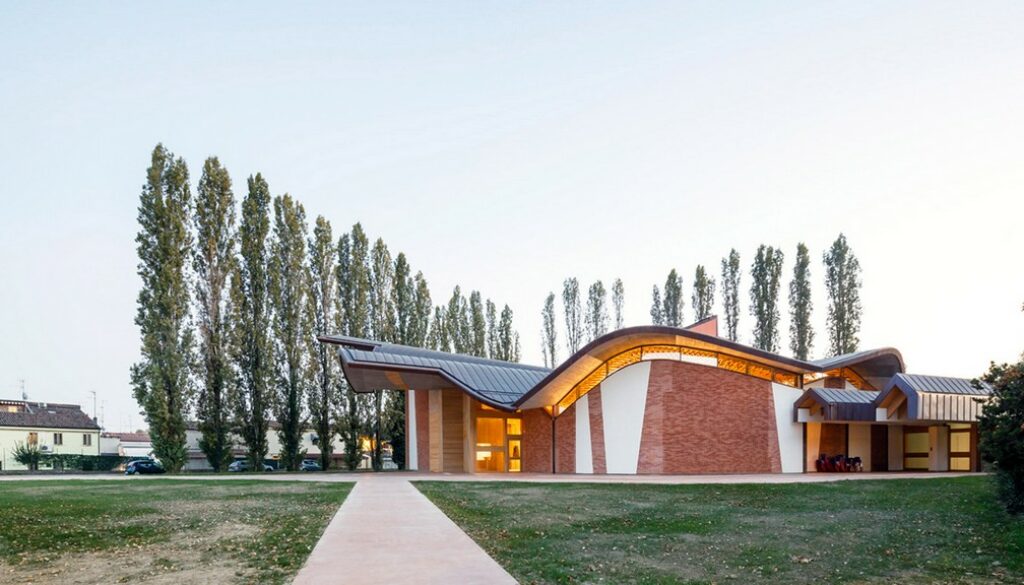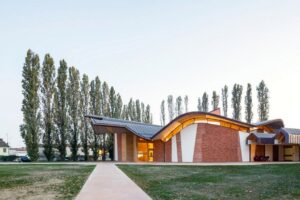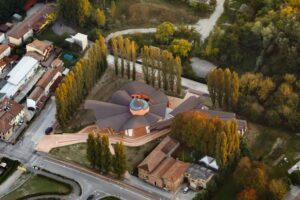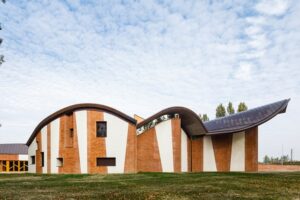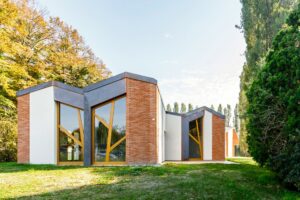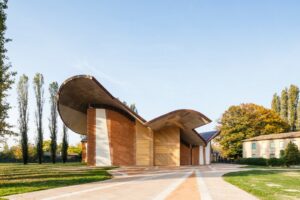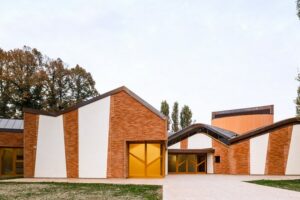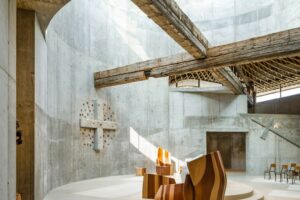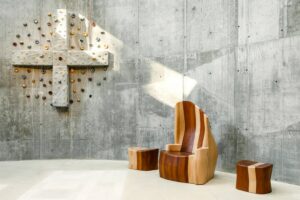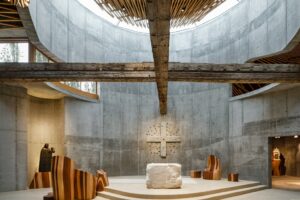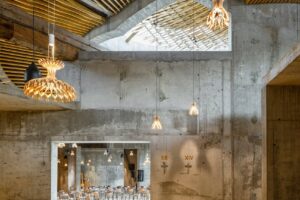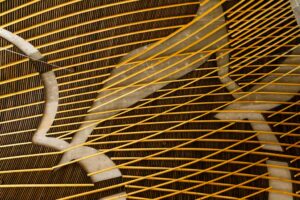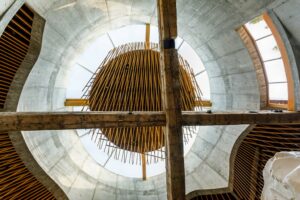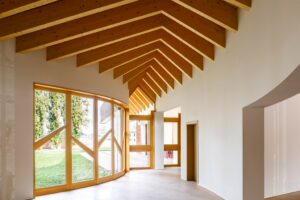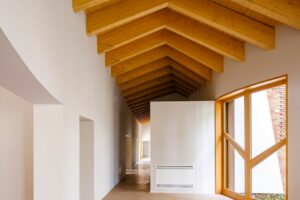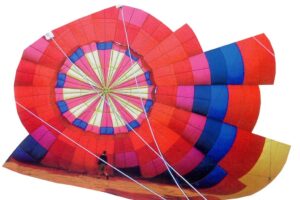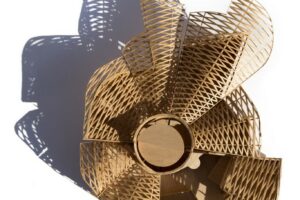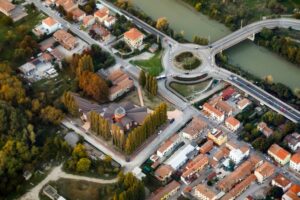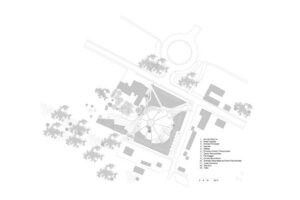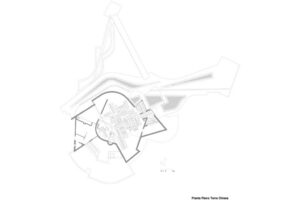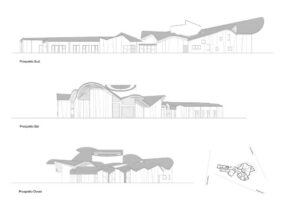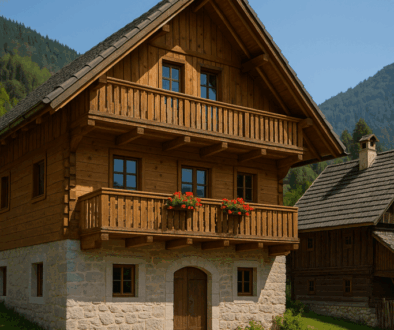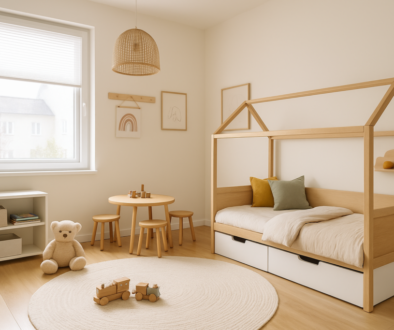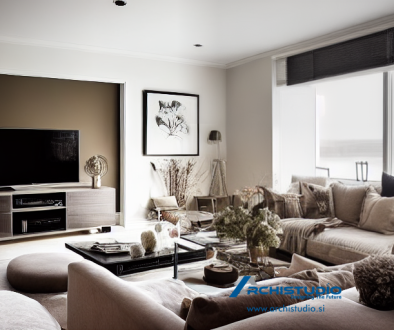Tops San Giacomo Apostolo church with undulating copper roof
Client: CEI Conferenza Episcopale Italiana, Parrocchia di San Giacomo Apostolo, Ferrara
Architect: Benedetta Tagliabue – Miralles Tagliabue EMBT
Spanish studio EMBT has designed a brick-and-plaster-clad church in Ferrara, Italy, which has a copper roof informed by hot air balloons and an interior that aims to be a modern take on primitive churches.
The church was developed over 10 years and completed in 2021. It sits in the parish of San Giacomo Apostolo in the Arginone neighbourhood of Ferrara and has an uneven, organic shape.
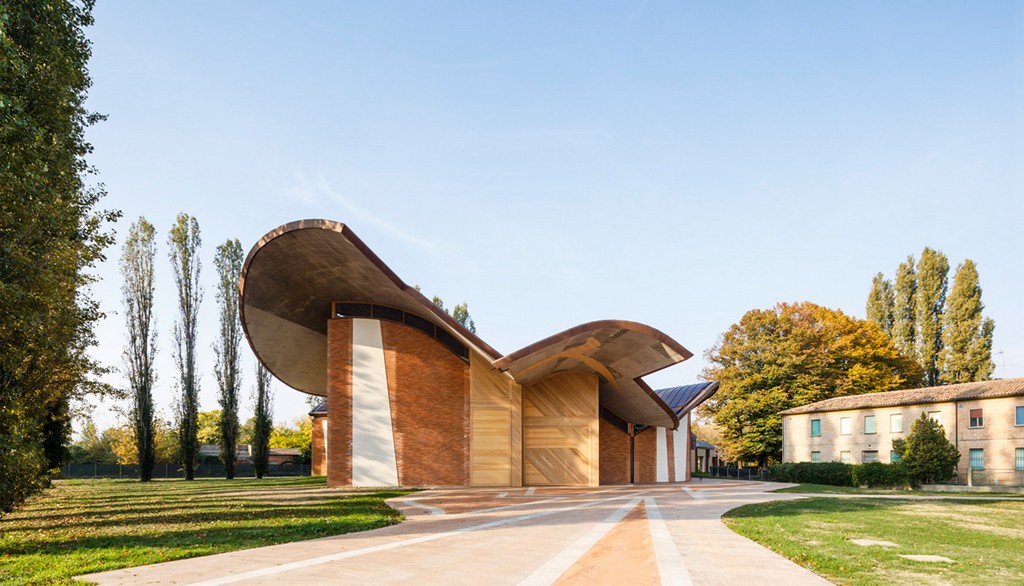
The shape of the church roof nods to hot air balloons
The sculptural design and wavy copper-clad roof reference the hot air balloons that fill the sky above Ferrara each year.
The inspiration came one day when they were analysing the territory and the environment, when they saw the sky of Ferrara full of hot air balloons for the international festival that is held every year in September.
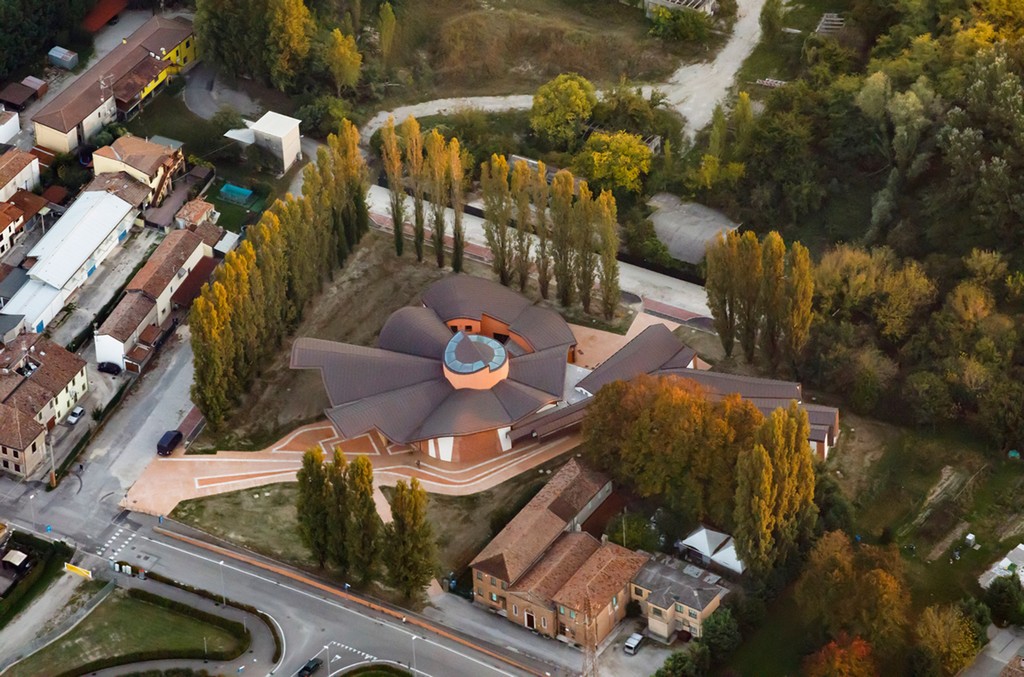
The church is located in Ferrara, Italy
They imagine a light and friendly church, which comes from heaven and is located in the place where the Christian community needs it most, a contemporary church, rich in strength and symbolism, surprising and familiar at the same time, inspired by the early days of the church.
The exterior of the 710-square-meter church has a facade made of alternating brick and plaster that creates a striped effect.
In some sections, the bricks have been placed in a three-pointed protruding design in reference to the Renaissance-era Palazzo dei Diamanti in Ferrara.
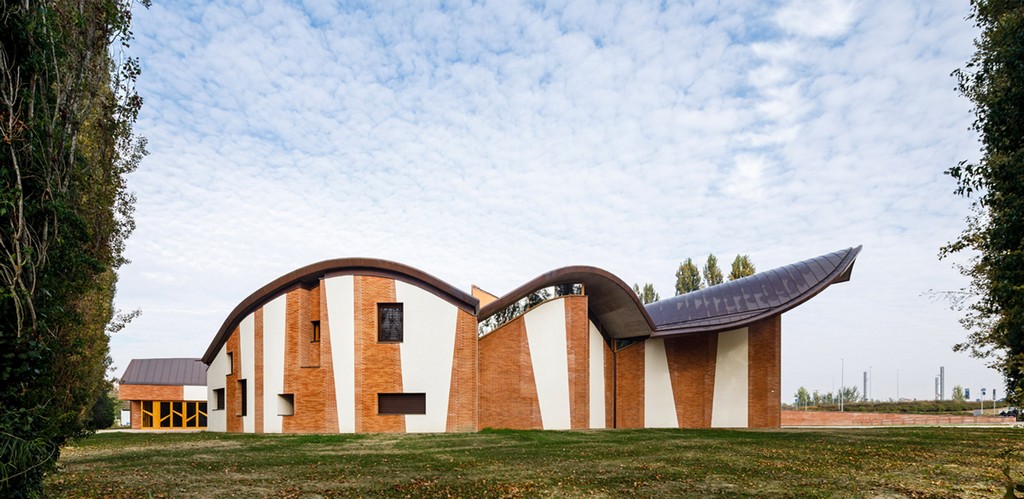
Brick and plaster create a striped facade
The church was designed on a “visual and spiritual axis” to a new bridge and the city of Ferrara across the river. It has a spacious plaza in front that functions as a meeting place as well as an extension of the church courtyard.
A large wooden gate leads inside, where the altar sits at the centre underneath a large skylight. A classroom, side chapel, baptistery and annexes are organised radially around it.
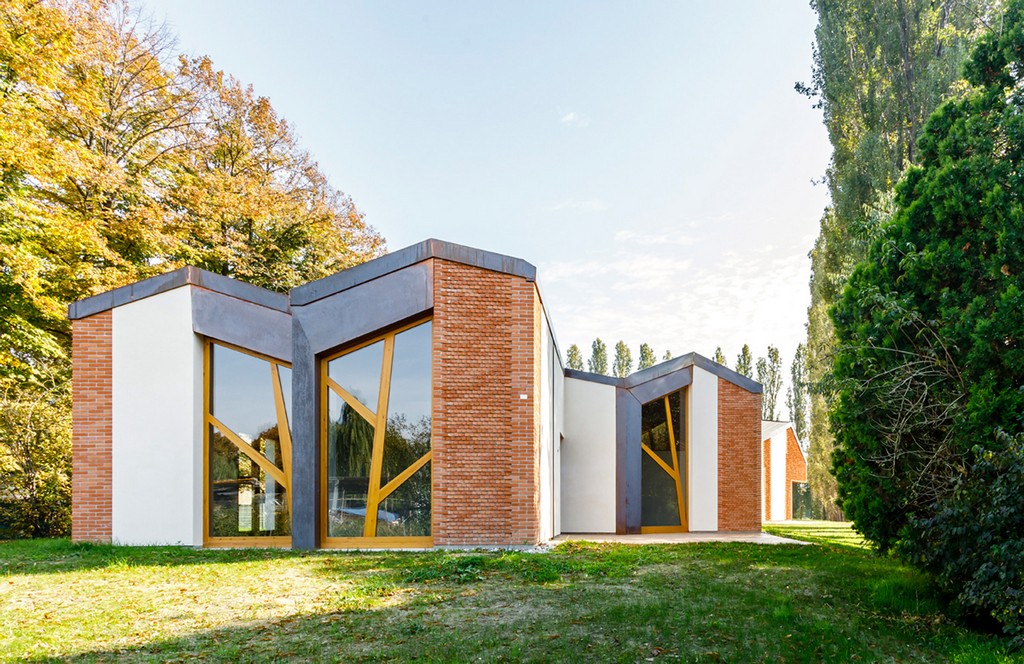
The exterior features angled bricks that reference a local Renaissance building
The central space, which is dedicated to the apostle St James, has raw concrete walls and a stone floor. Its altar was made from a block of white Travi stone that was left almost totally untreated, adding to the rough-hewn feel of the interior.
It has four small crosses, one in each corner, and also features a secret drawer that holds a relic.
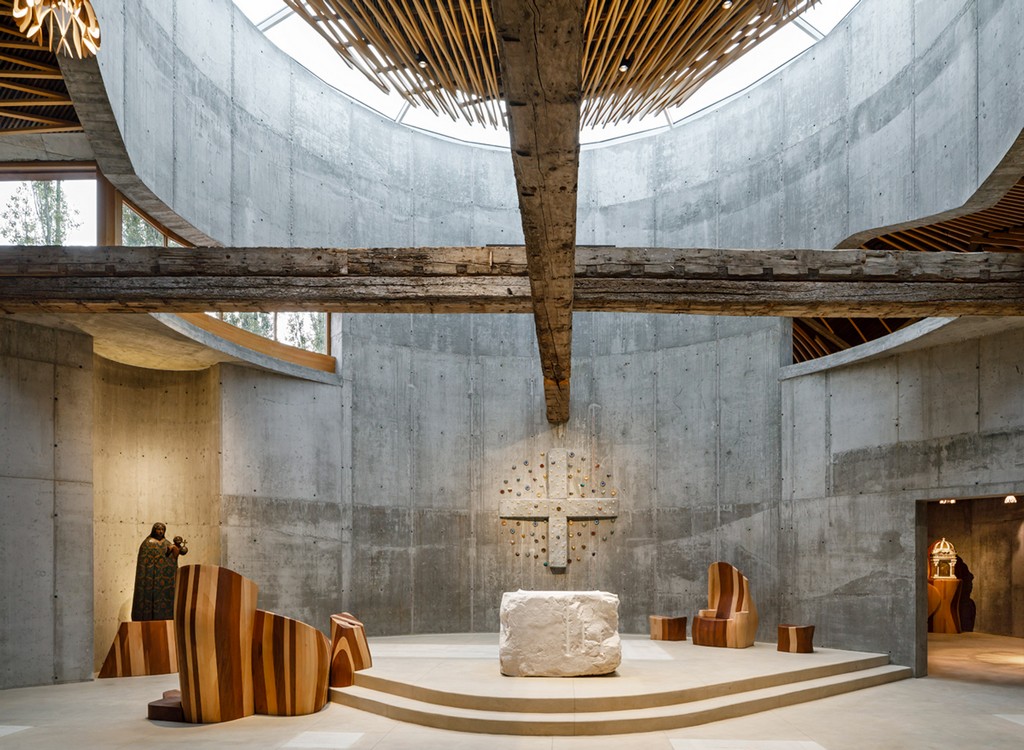
Concrete walls clad the interior of the church
The raw, unadorned design of the altar was chosen to “recall the most primitive moments of the church when a mass was celebrated with found objects and where the symbol acquired an even greater importance”, the studio said.
Above the nave sits a large cross made from wooden beams that were salvaged from Ferrara’s old town hall.
A wood baldachin is suspended under the skylight and was designed to evoke the shape of the shell of St James, a traditional symbol connected to the apostle.
Artist Enzo Cucchi created the artworks for the interior, including large grey stone crosses that protrude from the church walls and colourful ceramic pieces.
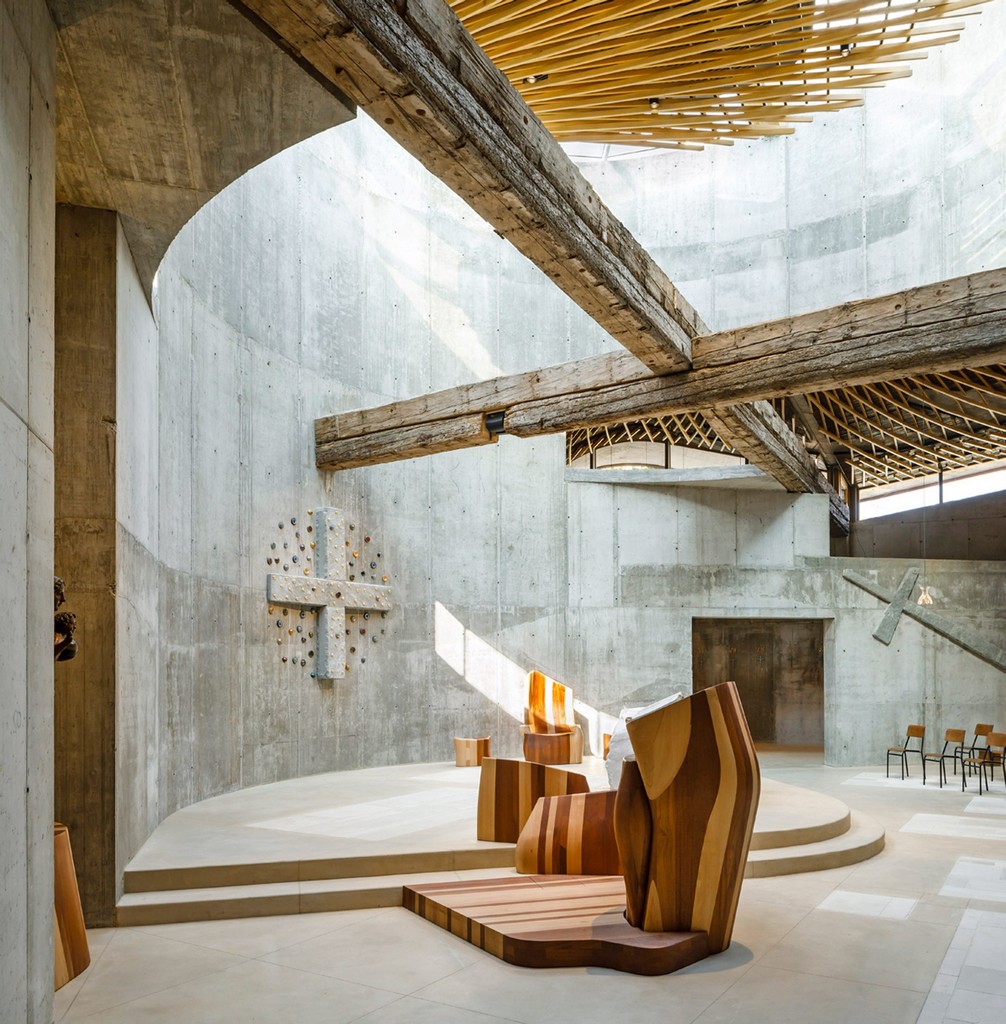
Two wooden beams form a cross above the altar
The organic feel of the interior is underlined by furniture made from different types of laminated wood, resulting in a striped look that resembles the exterior.
Tagliabue also designed the suspension lamps for the church, which are made from thin wooden slats that create small domes.
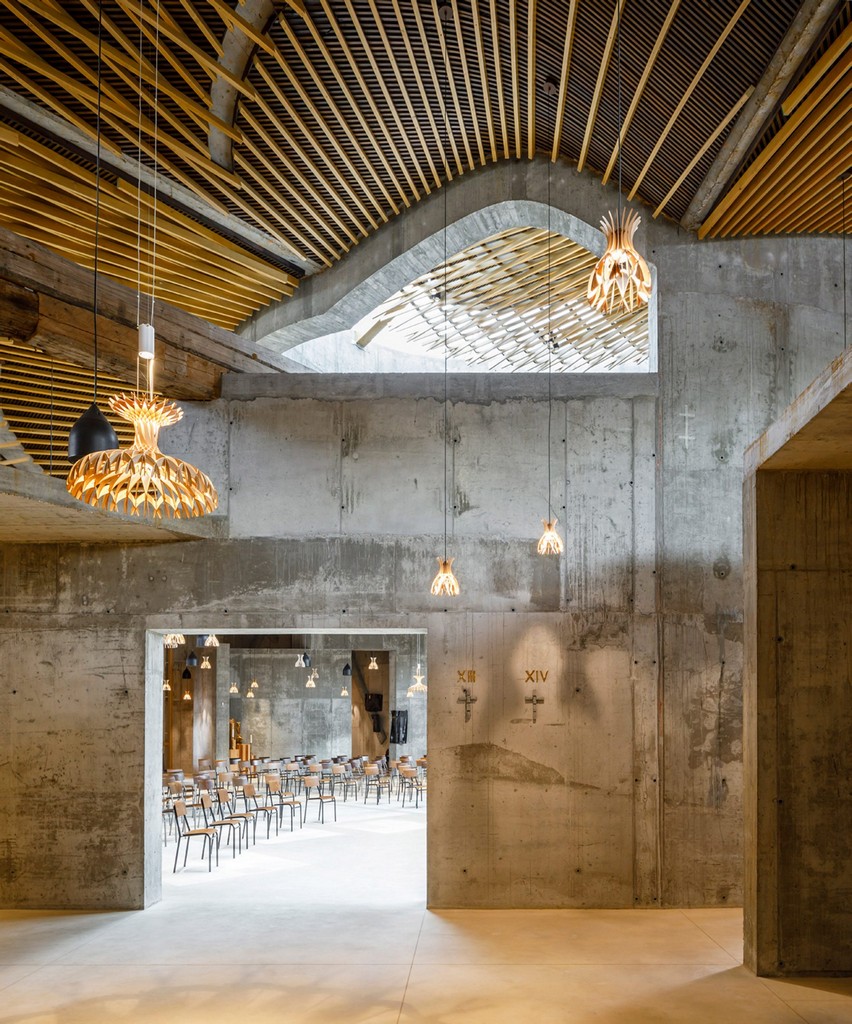
The undulating shape of the roof can be seen inside the church
A weekday chapel is attached to the main church but has a separate entrance and leads on to a sacristry, penitentiary, parish house and more classrooms. The parish hall, classrooms and rectory measure 873 square metres in total.
EMBT has worked on the church since 2011, when the studio won a competition to design the project for the Arcidiocesi di Ferrara-Comacchi.
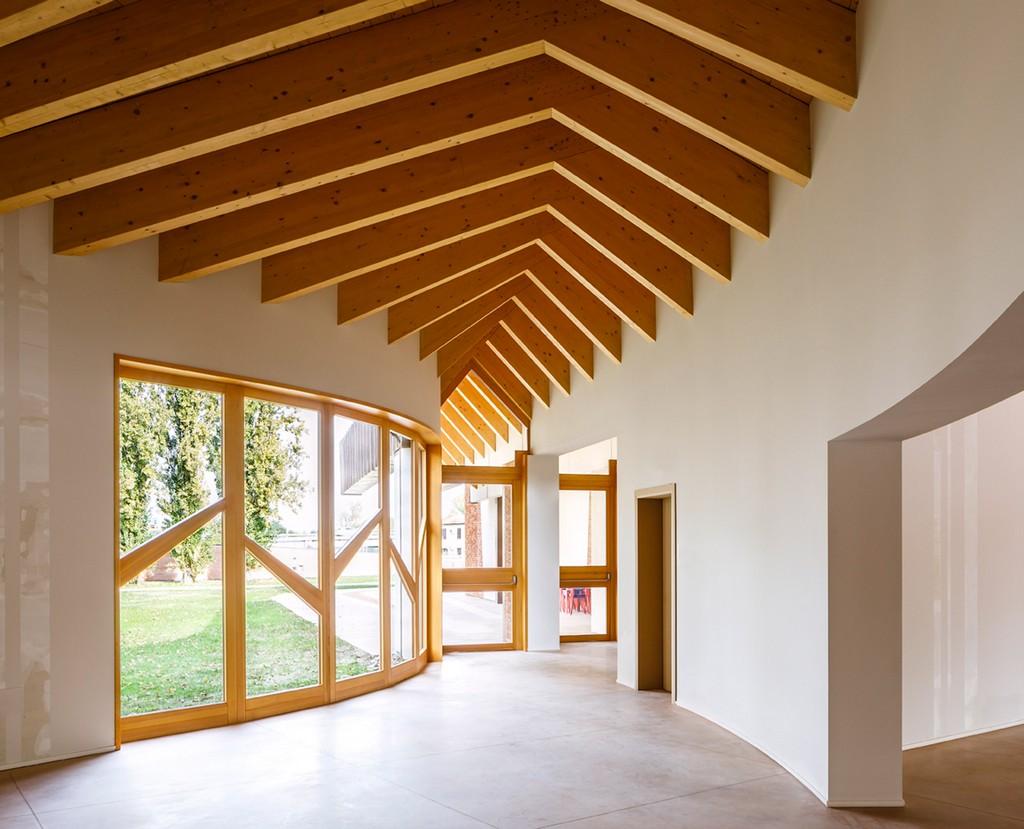
Ancillary spaces are connected to the main church
EMBT was founded in Barcelona in 1994 by Benedetta Tagliabue and late architect Enric Miralles. Other recent designs by the studio include a mass-timber metro station in Naples and a music conservatory in Shenzhen covered in wooden and ceramic louvres.
The photography is by Marcela Grassi.

